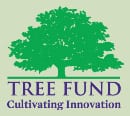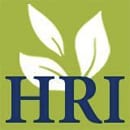Faculty
Dr. Nina L. Bassuk
Emeritus Professor and director
nlb2@cornell.edu
Research:
- Tree, shrub and ground cover selection and evaluation based on site environmental conditions.
- Developing screening protocols to objectively assess a woody plant adaptation to environmental stress factors.
- Asexual propagation of desirable, hard-to-root woody plants.
- Investigating transplanting and establishment problems in several genera of shrubs and trees.
- Development and application of a load-bearing soil mix to use under pavements, CU-Structural Soil™.
Extension:
- Bulletins and other resources, workshops, conferences on soil remediation, plant selection for urban sites, site assessment, tree protection, tree diversity.
- NYS Urban Forestry Council.
More about Bassuk:
- Trees: the True Urban Warriors – Profile of Nina Bassuk and the work of the Urban Horticulture Institute in Scientia. Listen to audio version.
- Arbor Day Tribute to Nina Bassuk – Video tribute by the Arbor Day Foundation celebrating Bassuk’s accomplishments on the occasion of the organization honoring her with their Frederick Law Olmsted Award.
- The Science of Shade – periodiCALS magazine profile of Bassuk and her three decades of re-imagining urban horticulture.
Research associate
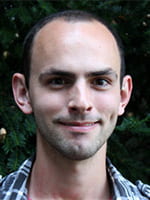 Bryan Denig – Bryan’s research involves the selection, evaluation, and propagation of a number of unique oak hybrids created by the UHI in 2004-2006. These diverse hybrids have the promise of increased vigor and better adaptation to urban stresses such as alkaline soil, flooding, drought, and pests. Since 2012, Bryan has been working on this project with the objective of developing superior oaks for urban landscapes. The ultimate goal of this long-term project is to introduce these selections into the nursery trade as named cultivars. To overcome the challenges with propagating oaks asexually, he is currently working with tissue culture techniques in order to rapidly multiply large numbers of clonally propagated oaks.
Bryan Denig – Bryan’s research involves the selection, evaluation, and propagation of a number of unique oak hybrids created by the UHI in 2004-2006. These diverse hybrids have the promise of increased vigor and better adaptation to urban stresses such as alkaline soil, flooding, drought, and pests. Since 2012, Bryan has been working on this project with the objective of developing superior oaks for urban landscapes. The ultimate goal of this long-term project is to introduce these selections into the nursery trade as named cultivars. To overcome the challenges with propagating oaks asexually, he is currently working with tissue culture techniques in order to rapidly multiply large numbers of clonally propagated oaks.
Collaborator
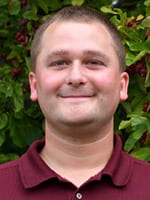 Brandon Miller – Brandon is an Assistant Professor in the Department of Horticultural Science at the University of Minnesota and a Curator of Plant Collections at the Minnesota Landscape Arboretum. His Extension and research programs focus on the horticultural aspects of developing and managing resilient landscapes, especially those in northern climates. As the lead of the Center for Winter Hardy Landscape Plants, his team of students and researchers seek to bolster landscape resiliency through the diversification of modern plant palettes by identifying novel plants with horticultural merit, resolving production bottlenecks of underutilized species, and identifying management practices that support plant establishment and long-term health. He joined the faculty at the University of Minnesota in 2021 after earning his Ph.D. studying under the direction of Dr. Nina Bassuk. Today, Dr. Miller’s team collaborates with the Urban Horticulture Institute to improve landscape resiliency in the built environment.
Brandon Miller – Brandon is an Assistant Professor in the Department of Horticultural Science at the University of Minnesota and a Curator of Plant Collections at the Minnesota Landscape Arboretum. His Extension and research programs focus on the horticultural aspects of developing and managing resilient landscapes, especially those in northern climates. As the lead of the Center for Winter Hardy Landscape Plants, his team of students and researchers seek to bolster landscape resiliency through the diversification of modern plant palettes by identifying novel plants with horticultural merit, resolving production bottlenecks of underutilized species, and identifying management practices that support plant establishment and long-term health. He joined the faculty at the University of Minnesota in 2021 after earning his Ph.D. studying under the direction of Dr. Nina Bassuk. Today, Dr. Miller’s team collaborates with the Urban Horticulture Institute to improve landscape resiliency in the built environment.
Research Technician
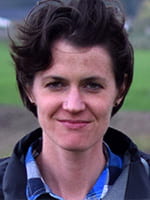 Shannan Sweet – Shannan’s degree in Plant Physiology, Ecology, and Remote Sensing from Columbia University brought her to Cornell University in 2016 to work with several professors, throughout various departments, investigating numerous research areas. In 2023 she began working for Dr. Bassuk helping to cultivate Minns Garden and other plantings, gardens and research plots throughout Cornell campus. She continues to sow, propagate and plant trees, shrubs, annuals and perennials as well as to maintain landscapes across campus. Shannan is also investigating the effect of incorporating biochar with Structural Soil© under various drought conditions on the growth of Quercus (Oak) and Carya (Hickory). She maintains the online database of the Cornell Hydrangea paniculata collection, possibly the largest H. paniculata collection in North America. Shannan also resersaches the effect of amending soils in an urban environment on the growth of Gymnocladus dioicus (Kentucky Coffee tree).
Shannan Sweet – Shannan’s degree in Plant Physiology, Ecology, and Remote Sensing from Columbia University brought her to Cornell University in 2016 to work with several professors, throughout various departments, investigating numerous research areas. In 2023 she began working for Dr. Bassuk helping to cultivate Minns Garden and other plantings, gardens and research plots throughout Cornell campus. She continues to sow, propagate and plant trees, shrubs, annuals and perennials as well as to maintain landscapes across campus. Shannan is also investigating the effect of incorporating biochar with Structural Soil© under various drought conditions on the growth of Quercus (Oak) and Carya (Hickory). She maintains the online database of the Cornell Hydrangea paniculata collection, possibly the largest H. paniculata collection in North America. Shannan also resersaches the effect of amending soils in an urban environment on the growth of Gymnocladus dioicus (Kentucky Coffee tree).
Research Assistant
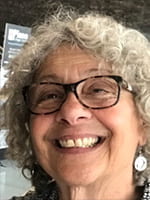 Joann Gruttadaurio – Former Senior Extension Associate in Cornell’s Department of Horticulture Department, Joanne was responsible for developing resources and programs for sports turf managers, lawn care professionals and commercial horticulturalists. Her applied research focused on developing best management practices for sports turfgrass managers and lawn care professionals and included soil and water management, nutrient management, soil test interpretation, utilization of compost amendments and accelerated sod production practices and guidelines for the use of wastewater in turfgrass settings. She joined the UHI team in 2020 as a Research Assistant for the Hybrid Oak Project and serves as the coordinator for the statewide on-site visits and the collection and data management for the project that includes 40 cooperating municipalities.
Joann Gruttadaurio – Former Senior Extension Associate in Cornell’s Department of Horticulture Department, Joanne was responsible for developing resources and programs for sports turf managers, lawn care professionals and commercial horticulturalists. Her applied research focused on developing best management practices for sports turfgrass managers and lawn care professionals and included soil and water management, nutrient management, soil test interpretation, utilization of compost amendments and accelerated sod production practices and guidelines for the use of wastewater in turfgrass settings. She joined the UHI team in 2020 as a Research Assistant for the Hybrid Oak Project and serves as the coordinator for the statewide on-site visits and the collection and data management for the project that includes 40 cooperating municipalities.



